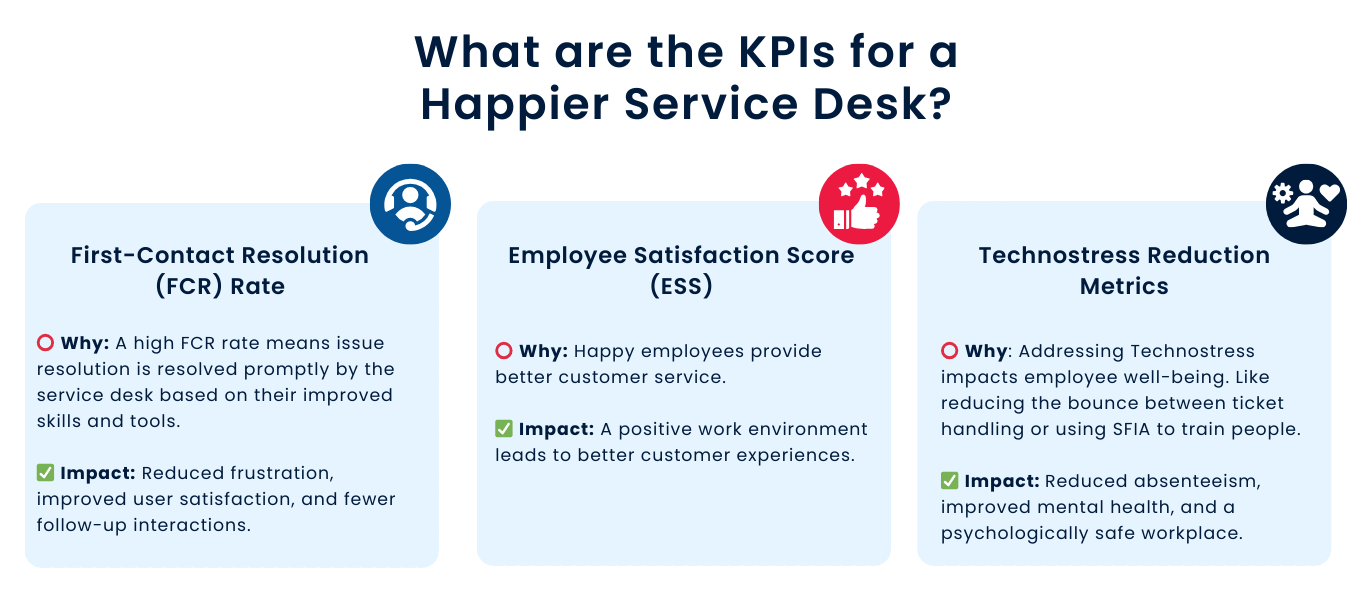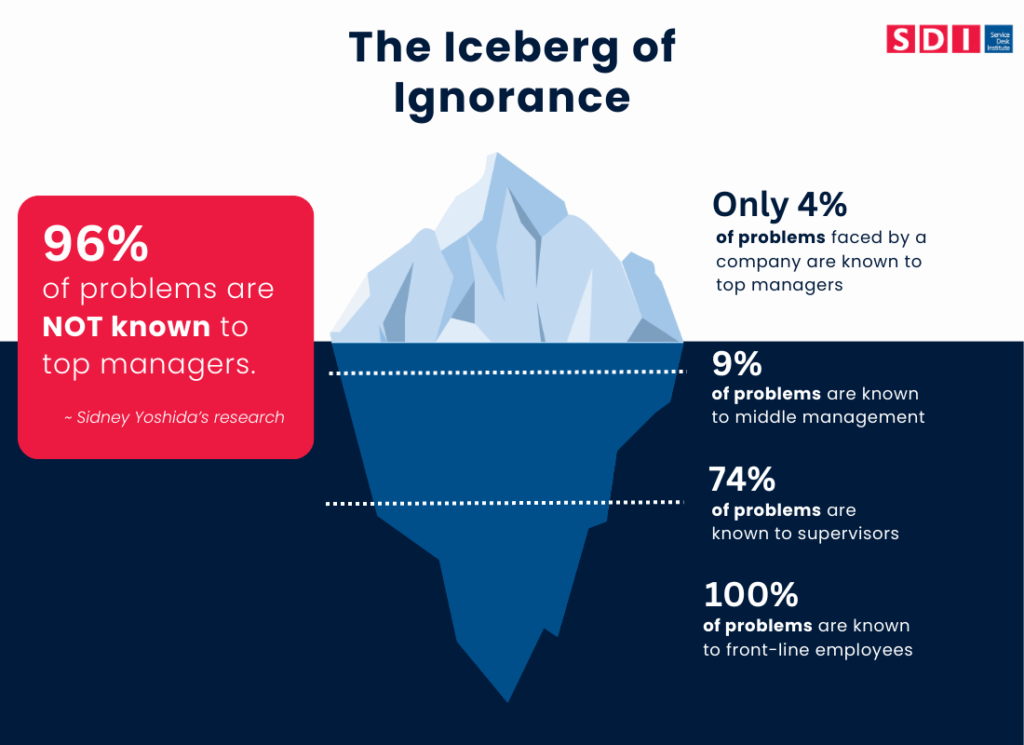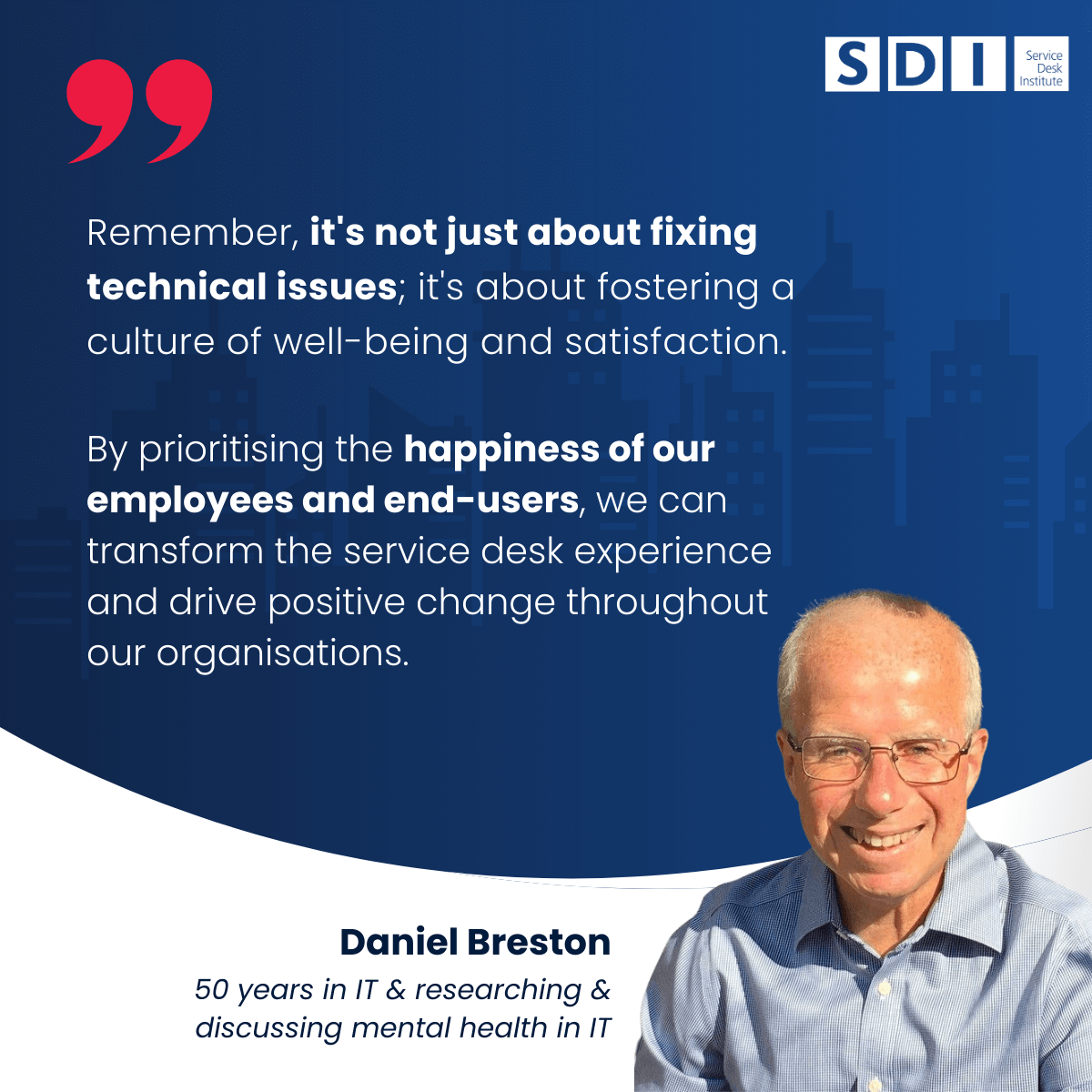 Back to Resources
Back to Resources
By Daniel Breston
On March 20th each year, we celebrate the International Day of Happiness. This UN-declared day reminds us that happiness is a human right worth celebrating. The theme for 2024 is “Happier Together.” 🎉
In times of uncertainty and conflict, this theme emphasises the importance of feeling connected to others and being part of something bigger.
SDI wants to make service desks a Happy Place and asked me to write a blog on Technostress and how to benefit from the service desk to ensure that our service desks can work better and safer for all concerned.
Understanding Technostress
“Technostress, first identified by psychologist Craig Brod in 1984, refers to the negative psychological link between people and technology use.”
Technostress occurs when individuals struggle to adapt to and master technology or feel overwhelmed by the strain it places upon them.
Always mentally on to answer emails or messages, under constant demand to learn new features, spending time evaluating the data given to us to ensure it is correct or having to scramble through a long flow of technology (a value stream) to obtain assistance are all examples that can trigger Technostress.
I first learned about Technostress from Hank Marquis, whom I strongly suggest you follow.
How to combat technostress with Experience Level Agreements (XLAs)?
What Are XLAs?
Experience-level agreements (XLAs) reimagine traditional Service-Level Agreements (SLAs). Unlike SLAs, which focus on operations and outputs, XLAs measure performance in outcome and value terms.
XLAs are end-user-centric metrics and KPIs that quantify the perceived quality of IT services and support. They prioritise people and happiness over rigid metrics.
I am constantly amazed at how often the service desk is left out of XLA discussions, as these are typically created elsewhere with little understanding of technology use or issues in the organisation.
The service desk knows, though, that they see the good, the bad, and the ugly aspects of technology in their company. The best place to consider the lessening of Technostress and the increase of happiness is by mining the knowledge of the service desk, both the people and the data they gather.
The most straightforward image I can give you of XLAs is to think about the iceberg of leadership ignorance. First mentioned in the 1960s, the iceberg clearly illustrates how those at the top still need to have the level of reality that those at the bottom live with daily.
Using XLAs is one way to melt that darn iceberg! 🧊
Benefits of XLAs for Technostress and Happiness
#1 Measuring Business Value
XLAs help us understand the business impact of our service desks, which is where, after all, customers mostly meet your organisation. The benefit is that you can begin to align IT services with organisational goals, making folks happy.
#2 Increasing Cooperation
Shared goals and a focus on end-users foster collaboration among all the teams involved in creating, delivering and supporting a service or product. Understanding who does what, when and why (work together) can reduce technostress and enhance overall well-being.
#3 Motivating Service Desk Teams
Over my 50+ year career, I’ve managed or consulted many service desks. The most common complaint is that what we do is not seen as valuable and that we have no true purpose or direction based on organizational goals.
Clear XLAs provide that sense of purpose and direction by helping everyone understand their impact on end-users, thus increasing motivation and collaboration.
What are the KPIs for a Happier Service Desk

Key Indicators of Performance (KPIs) are best in a workshop that ensures that the metrics link from team to organisational goals.
KPIs fail when you have a target based on the following items that do not make sense to the organisation or the consumer (internal and external) of your digital services and products. This broken link encourages Technostress, which can cause confusion, customer loss and death.
Yes, I am serious – avoiding Technostress is a bad thing to do!
Let’s look at the measures that can act as a guide on XLAs to assist in the creation of a happy service desk as exhibited by staff and customers:
First-Contact Resolution (FCR) Rate
⭕ Why: A high FCR rate means issue resolution is resolved promptly by the service desk based on their improved skills and tools.
✅ Impact: Reduced frustration, improved user satisfaction, and fewer follow-up interactions.
Employee Satisfaction Score (ESS)
⭕Why: Happy employees provide better customer service.
✅Impact: A positive work environment leads to better customer experiences.
Technostress Reduction Metrics
⭕Why: Addressing Technostress impacts employee well-being. Like reducing the bounce between ticket handling or using SFIA to train people.
✅ Impact: Reduced absenteeism, improved mental health, and a psychologically safe workplace.
The Shiny Object Syndrome
Paul Wilkinson used the Shiny Object to focus on how people and organisations want the next tech without considering why or the impact on themselves or others.
“Shiny object syndrome is a significant cause of technostress as it can instil insecurity about what this shiny thing is precisely supposed to do and why I want or am being asked to use it.”
What you want to do is to carefully evaluate new technologies and their impact on Technostress before implementation. Use pilots, create user shiny object groups to obtain feedback, and review the incidents or calls received by the service desk or the well-being team as new technology is introduced.
Managers vs. Leaders and their part in Technostress

The distinction between managers and leaders is crucial. Let’s explore their roles and how they impact the well-being:
Managers
⚡Awareness of Technostress: Managers must recognise the signs of Technostress within their teams. They need to understand the challenges consumers face when dealing with technology.
✅ Operational Focus: Managers need to review the tasks along the value stream and constantly strive to improve the flow of work and information to meet XLAs and reduce Technostress, anxiety, depression or burnout.
Leaders
⚡The Iceberg of Ignorance: Imagine an iceberg—the visible tip represents the challenges managers see, while the submerged part symbolises the hidden struggles employees face. Leaders recognise that the bulk of the iceberg lies beneath the surface.
✅ Engaging with Managers: Effective leaders engage directly with managers. They seek insights into the ground level and all others providing a service, understanding the daily experiences of service desk teams. Leaders bridge the gap between perception and reality by melting the iceberg of ignorance.
Why Leaders and Managers Matter
They set the tone for the entire organisation as their actions and priorities influence the well-being of employees. Leaders and managers create a well-being work environment by prioritising employee happiness and customer satisfaction. This behaviour fosters collaboration, encourages open communication, and promotes a psychologically safe workplace.
Leaders and managers must ensure that service desks are safe and happy. As the service desk is the first point of contact for digital consumers, a happy desk reflects the organisation’s ethos and values.
Remember that only leaders and managers can prioritise employee well-being to create a positive cycle of service excellence. In doing so, they can act as obstacle removers along the entire digital technology lifecycle, making it safer, more effective, and more efficient.
Conclusion
Everyone experiences stress; in fact, some stress can motivate teams. Technostress is dangerous, but we have the tools to combat it. By embracing XLAs and celebrating happiness, we can transform our service desks into places where users and employees thrive. Let’s make “happier together” our mantra!
The Service Desk Institute and itSMF UK are committed to helping create positive experiences. As the leading professional bodies for IT Service Management, their resources, training programs, and community of experts are dedicated to helping navigate the challenges of Technostress and create happier service desks, the starting point for your technostress reduction initiative.
Remember, it’s not just about fixing technical issues; it’s about fostering a culture of well-being and satisfaction. By prioritising the happiness of our employees and end-users, we can transform the service desk experience and drive positive change throughout our organisations.
Let’s embrace the spirit of the International Day of Happiness and make “happier together” our guiding principle. Together, we can create service desks that deliver exceptional support and contribute to the overall well-being of our teams and customers.
Happy International Day of Happiness! 😊












